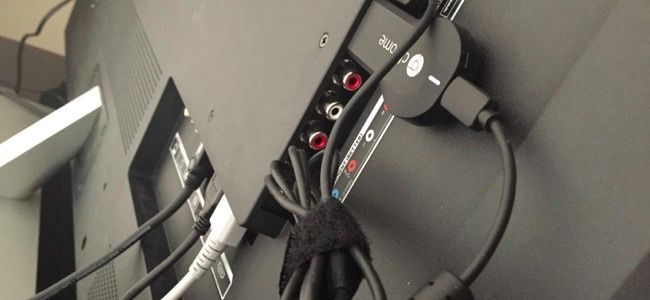If you don’t want Pixel and Pixel XL OTA updates to be automatically downloaded and installed in the background, then you can easily disable them.
With the introduction of Android 7.0 Nougat, Google has decided to handle OTA updates a bit differently than they have been done before. Previously, you would get an OTA update notification would have to tap on it if you wanted to download and install the update.
If you didn’t want the update, then you’d be stuck with this notification as it was generally very difficult to remove it without hacking into Android.
Now, this new seamless update feature is only possible with devices that actually ship with Android 7.0 Nougat or higher installed on it. Seamless updates are only possible thanks to the duplicate partition layout that has been implemented with the Pixel and Pixel XL. Community developers might be able to bring this feature via custom ROMs, but it’s way too early to tell at this point. Thankfully though, with this new way to download and install updates, there’s an easy way to disable them.
This is great for those who don’t want the OTA updates automatically downloaded in the background. This can be incredibly beneficial for those who have carrier devices and want to prevent their carrier from patching something that allows you to unlock the bootloader or root the device.
Pixel Disable OTA Updates
- Enable Developer Mode on the Pixel
- Launch the Settings application
- Scroll down and tap on the ‘Developer Options’ option
- Scroll down and toggle the ‘Automatic System Updates’ option
Explanation
This process is very simple to turn on and off, it’s just that not everyone knows the feature is there. Not only is it buried within the Settings application (which many people gloss over), but it’s also inside a hidden menu that makes it even less apparent. So to start, you will need to enable Developer Mode on the Pixel or Pixel XL. This is very easy to do and it won’t harm your phone in any way.
This will just give you access to a number a number of hidden features. Now, I wouldn’t advise that you go into the Developer options and just mess with everything that is there. That could cause some issues if you’re dealing with things that you aren’t clear with what they do. Most of the stuff in there is harmless though, and can easily be changed back to their stock settings (just remember what you’re changing).
So once Developer Mode has been enabled, you can go back to the main menu of the Settings application. If you scroll all the way down, you should see a new menu option called Developer Options. Tapping on this will take you to a sub menu that has all of the features that are only accessible when you enable Developer Mode. If you scroll down a little bit, you should see an option called Automatic System Updates.
This feature has a simple toggle to the right of it and gives you the ability to turn it on or off. By default, this feature is set to on, but you can simply tap on it to toggle the feature off. Once the Automatic System Updates toggle is set to off, all you have to do is tap the Home button to go back to the Home Screen and your job is done. OTA updates will no longer automatically download and install themselves in the background.
I’m not sure if you’ll still get the OTA update notification, or if it will be stuck in the Notification Panel after you’re told about it. I’ll try to remember to come back here and update this article once Google decides to push out an OTA update for the Pixel XL that I own.





Doesn’t work. I have the Oreo notification sitting on my phone right now and cannot dismiss it.
This disables *automatic* system updates. Meaning, the device will not automatically download the OTA update and install it for you in the background using Android’s new seamless update system with the a/b partitions
Yep, same here. It’s not a biggy but just taking up my valuable screen real estate 🙂 Did you find a way to stop the nag as well?
If you have root access, this method works
– https://www.techexplained.co/pixel-hide-ota-notification/
Alas, I tried that app, twice with reboots, but it did not stop the notification. So, I had to slide the notification slowly to the left and choose Disable Notifications for Google Play Services. It’s not ideal but works.
Hrmm, I assume you’re on Oreo? I’ll dive into this topic a little further and see if there’s something that can be done. But it may time some time as I’m not rooted at this moment
I’m not on Oreo yet. I’m on stock 7.1.1 from November 2016 but rooted with TWRP. My plan is to watch LineageOS and then flash that like my old Nexus 5.
Android is as far as I am concerned an extremely crippled for of Linux, that allows service providers the ability to build in malware so that apps keeps on downloading and you cannot prevent it in any way. I have a Cell C phone (South Africa) and it came loaded with Android 7.0, complete with Malware in its ota update.
It really is all about the security updates when it comes to malware, but at the end of the day it all depends on how trusting the smartphone OEM is.
You’ll want to look into getting an Android One device for quick security updates without having to pay $700 USD for a flagship smartphone.
“Android is as far as I am concerned an extremely crippled for of Linux, that allows service providers the ability to build in malware…”
Correct. It’s massive wiretapping. They have taken your picture, have your fingerprints, know your voice, your keystroke rhythms, every place you’ve been even if it’s VPN and they know all of your contacts and their contacts, your call logs and every conversation but they won’t let you record your own calls. The PC does more and larger financial transactions than these phones and they do not have KNOX or force updates. They will use this against you for political and control purposes. In China, India, Korea, and South American the phones are root-able but not in the US. Welcome to the Deep States of America. Snowden was right. Drain that swamp. It’s time for open source.